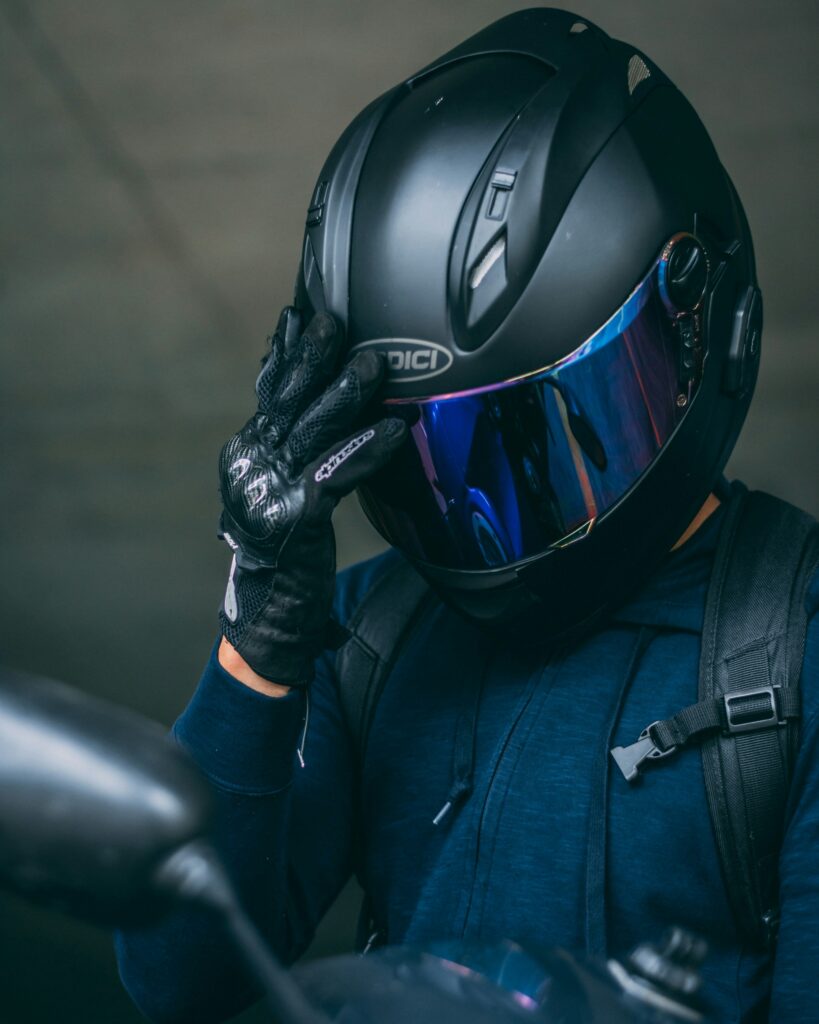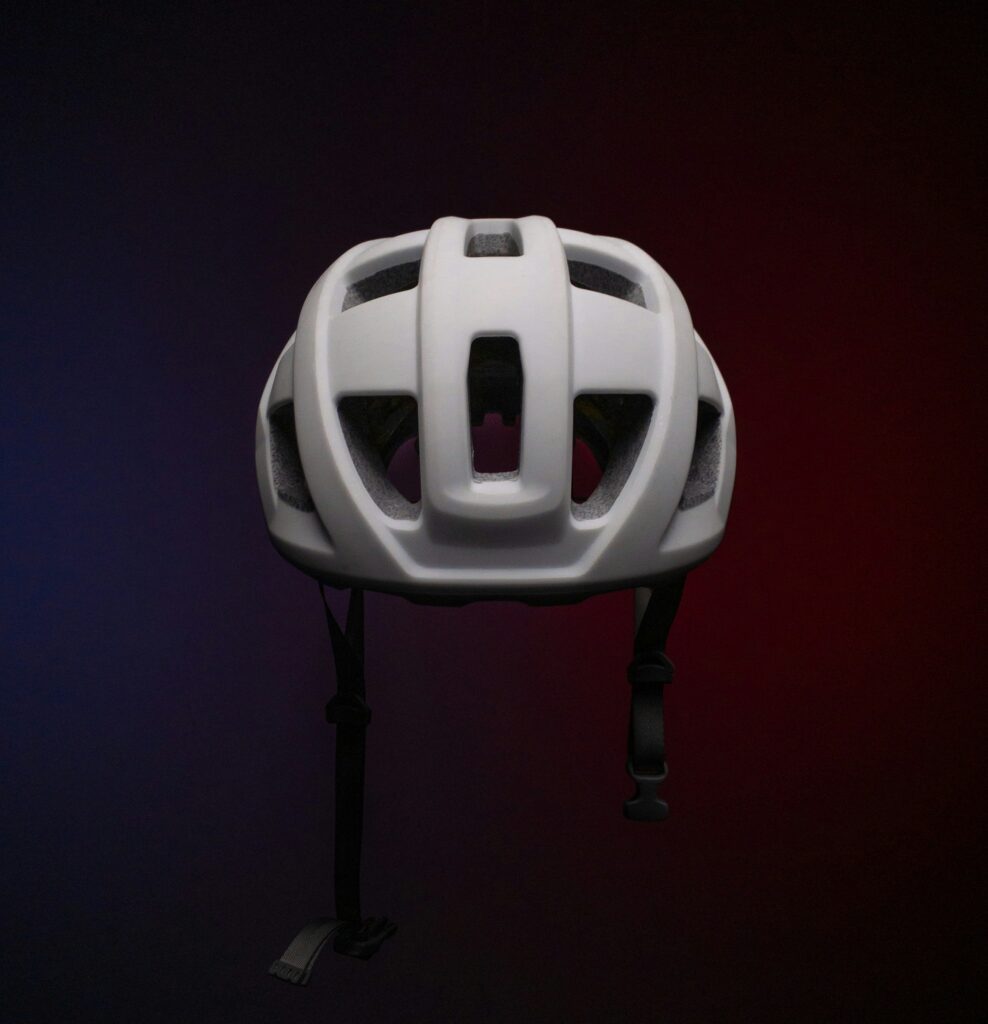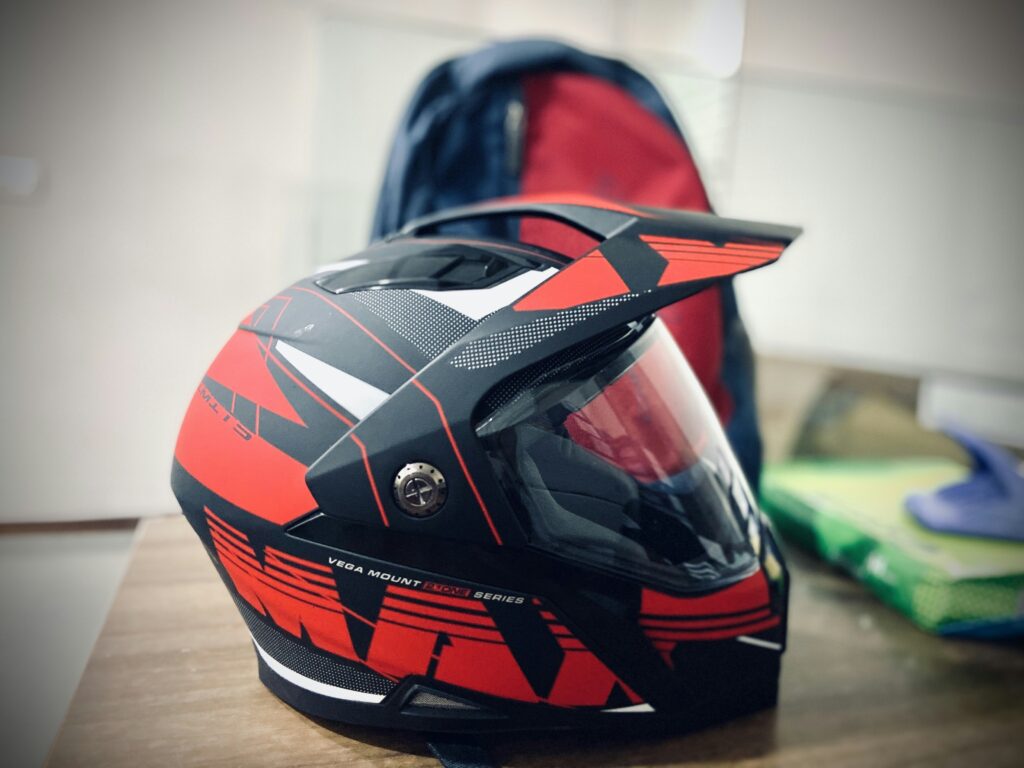When it comes to riding a dirt bike, safety should always be a top priority. And one essential piece of protective gear that should never be overlooked is a good dirt bike helmet. But with so many options available on the market, how do you know which one is the best for you? In this comprehensive guide, we will explore all the factors you should consider when choosing the right dirt bike helmet. From helmet types and certifications to fit and ventilation, we’ve got you covered with all the information you need to make an informed decision and ensure your head stays safe while enjoying your off-road adventures. So grab your gear and let’s dive into the ultimate guide to choosing the best dirt bike helmet.
Helmet Safety Standards
When it comes to choosing a dirt bike helmet, safety should be your top priority. There are several helmet safety standards that you should be aware of to ensure that you are getting a helmet that meets the necessary requirements. Here are some of the most commonly recognized helmet safety standards:
Department of Transportation (DOT)
The Department of Transportation (DOT) is a government agency in the United States that sets safety standards for various modes of transportation, including motorcycles. A helmet with a DOT certification meets the minimum safety requirements established by the DOT. Look for the DOT sticker on your helmet to ensure that it has been tested and approved.
Snell Memorial Foundation
The Snell Memorial Foundation is a non-profit organization that focuses on improving helmet safety through testing and research. Snell-certified helmets go through rigorous testing to ensure that they provide adequate protection in various impact scenarios. While not mandatory, many riders prefer helmets with Snell certification for added peace of mind.
European standards (ECE)
The ECE certification is another widely recognized helmet safety standard. The United Nations Economic Commission for Europe (ECE) sets safety standards for helmets used on European roads. Helmets with the ECE certification have undergone thorough testing and comply with the standards set by the ECE.
American National Standards Institute (ANSI)
The American National Standards Institute (ANSI) is an organization that develops and publishes voluntary consensus standards for various industries. Although ANSI standards are not specific to dirt bike helmets, ANSI-certified helmets have undergone testing to ensure that they meet certain impact protection requirements.
Helmet Types
Now that you understand the importance of safety standards, let’s dive into the different types of dirt bike helmets available on the market. Each helmet type offers its own advantages and considerations, so it’s important to choose the one that suits your riding style and preferences.
Full Face Helmets
Full face helmets provide the most comprehensive protection for off-road riders. These helmets cover the entire head, including the face, and feature a chin bar to provide added protection for the lower face and jaw. Full face helmets are ideal for riders who prioritize safety and who ride in more aggressive off-road conditions.
Open Face Helmets
Open face helmets, as the name suggests, have an open face design that leaves the face exposed. They typically cover the top and sides of the head, leaving the face and chin area uncovered. Open face helmets are popular among riders who value a wider field of vision and prefer a more casual and ventilated riding experience.
Dual Sport Helmets
Dual sport helmets are designed for riders who engage in both on-road and off-road riding. These helmets combine features of full face helmets and open face helmets, offering a versatile option. Dual sport helmets often feature a larger face shield for improved visibility on road sections, and a removable visor for off-road use.
Motocross Helmets
Motocross helmets are specifically designed for off-road racing and riding. These helmets prioritize airflow, ventilation, and a lightweight construction to keep riders cool and comfortable during intense riding sessions. They feature a large visor to protect against dirt and debris, and a chin bar for added protection.
Helmet Size and Fit
A properly fitting helmet is essential for maximizing both safety and comfort during your rides. Helmet size and fit play a crucial role in ensuring that your helmet performs as intended in the event of an impact. Here are some important considerations when it comes to helmet size and fit:
Importance of Proper Fit
Having a helmet that fits properly is vital. A helmet that is too loose may not provide adequate protection, while a helmet that is too tight can cause discomfort and even headaches. A proper fit ensures that the helmet stays securely in place during your ride, allowing it to do its job effectively in the event of a crash.

Measuring Your Head
To determine your helmet size, you need to measure the circumference of your head. Using a flexible tape measure, wrap it around the widest part of your head, just above your eyebrows and ears. Take note of the measurement in inches and refer to the sizing chart provided by the helmet manufacturer to find the appropriate size.
Trying the Helmet On
Once you have determined your helmet size, it’s important to try on several helmets to find the perfect fit. Different helmet brands and models may have slightly different shapes, so it’s important to try on a few options to see which one feels the most comfortable and secure on your head.
Important Fit Considerations
When trying on a helmet, there are a few fit considerations to keep in mind. First, the helmet should sit snugly on your head without any pressure points. It should feel secure but not overly tight. The cheek pads should provide a snug fit, and the helmet should not move around when you shake your head.
It’s also important to consider the helmet’s weight and ventilation. A helmet that is too heavy can cause neck strain over time, while inadequate ventilation can lead to discomfort and overheating during rides. Finding the right balance of weight and ventilation is crucial for a comfortable and enjoyable riding experience.
Helmet Material and Construction
The material and construction of a dirt bike helmet play a significant role in its overall performance and protection. Understanding the different components and materials used in helmets can help you make an informed decision when choosing the right one for your needs.
Outer Shell Material
The outer shell of a helmet is its first line of defense against impact. It provides the initial impact absorption and distributes the force of an impact over a larger area. Most modern dirt bike helmets are made from lightweight and durable materials such as polycarbonate, fiberglass, or carbon fiber. These materials offer a high strength-to-weight ratio and excellent impact resistance.
Inner Liner Material
The inner liner of a helmet is designed to absorb and disperse the energy from an impact. It acts as a cushion between the outer shell and your head, reducing the force transmitted to your brain. Common materials used for inner liners include expanded polystyrene (EPS), expanded polypropylene (EPP), and multi-density foam.
EPS (Expanded Polystyrene) Liner
EPS is the most common material used for helmet liners due to its excellent impact-absorbing properties. It is lightweight, energy-absorbing, and can effectively reduce the force of an impact. Helmets with EPS liners are often more affordable and offer reliable protection for most riding scenarios.
Helmet Weight
The weight of a helmet can significantly impact your riding comfort, especially during long rides or intense off-road sessions. Heavier helmets can cause neck fatigue and discomfort over time. Look for lightweight helmet options that prioritize a balance between weight and protection to ensure a comfortable and fatigue-free riding experience.
Helmet Ventilation
Proper ventilation is essential for keeping your head cool and comfortable during rides. Ventilation systems in a helmet allow airflow to circulate, preventing overheating and reducing the buildup of sweat. Look for helmets with strategically placed vents and customizable airflow options to ensure optimal ventilation for your riding conditions.
Helmet Features
In addition to safety and construction, helmet features can enhance your riding experience and add convenience. Here are some common helmet features to consider when choosing the best dirt bike helmet for your needs:
Visor
The visor is a key feature in most dirt bike helmets. It protects your eyes from the sun, wind, and debris, helping to enhance visibility and reduce eye strain. Look for helmets with adjustable visors that allow you to customize the position to accommodate various riding conditions.

Shield
Some helmets come with a shield, which provides an additional layer of eye protection. Shields are typically clear or tinted and can be easily flipped up or down. The shield helps to protect your eyes from dirt, dust, and bugs while riding, improving overall safety and comfort.
Chinstrap and Fastening System
The chinstrap and fastening system of a helmet ensure a secure and snug fit. Look for helmets with adjustable chinstraps that can be tightened or loosened to fit your specific preference. Double D-ring, quick-release, or ratchet chinstrap systems are commonly used, each offering its own advantages in terms of convenience and security.
Removable Liner and Padding
Removable liners and padding make helmet maintenance and cleanliness much easier. After long rides, sweat and dirt can accumulate inside the helmet. Being able to remove and wash the liners and padding keeps your helmet fresh and odor-free, enhancing comfort and hygiene.
Bluetooth and Communication Systems
For riders who enjoy staying connected or communicating with fellow riders, helmets with Bluetooth and communication systems can be a game-changer. These systems allow you to listen to music, make phone calls, or communicate with others in your group without having to stop or remove your helmet.
Helmet Certifications and Ratings
To further ensure the safety and quality of a dirt bike helmet, certifications and ratings provide valuable information. Let’s take a look at some of the most recognized certifications and ratings that you should look for when choosing a helmet:
DOT Certification
A helmet with a DOT certification meets the minimum safety requirements established by the Department of Transportation. DOT certification indicates that the helmet has undergone testing and meets the necessary safety standards for motorcycles. This certification is recognized in the United States.
Snell Certification
Snell-certified helmets are put through rigorous testing by the Snell Memorial Foundation. These helmets must meet specific impact protection requirements to ensure maximum safety. While not mandatory, many riders prefer Snell-certified helmets for their reputation for exceptional safety standards.
ECE Certification
The ECE certification is recognized by the United Nations Economic Commission for Europe. Helmets with the ECE certification have met the safety standards set by the ECE and have undergone thorough testing to ensure their effectiveness in various impact scenarios. This certification is recognized in many countries worldwide.
Sharp Rating (Safety Helmet Assessment and Rating Programme)
The Sharp rating is a voluntary helmet rating system in the United Kingdom. Helmets receive a rating between one and five stars based on their overall safety performance. The Sharp rating provides valuable information for riders looking for helmets with exceptional impact protection.
Helmet Price Range
Helmet prices can vary significantly depending on the brand, features, and construction materials. Here are the three main price ranges you can expect to find when shopping for a dirt bike helmet:
Budget Helmets
Budget helmets offer basic protection and functionality at an affordable price point. While they may not include all the bells and whistles of higher-end helmets, budget options still meet the necessary safety standards. If you’re a beginner or on a tight budget, a budget helmet can provide suitable protection for your riding needs.

Mid-range Helmets
Mid-range helmets strike a balance between price and features. These helmets often include additional features such as improved ventilation, removable liners, and enhanced comfort. They are a popular choice for riders seeking a blend of quality, comfort, and value for money.
High-end Helmets
High-end helmets come with advanced features, premium construction materials, and cutting-edge designs. They typically incorporate the latest safety technologies for maximum impact protection. If you prioritize performance, comfort, and the most advanced features available, investing in a high-end helmet may be worth considering.
Helmet Maintenance and Care
Proper maintenance and care of your dirt bike helmet are crucial for its longevity, performance, and your safety. Here are some essential tips to keep your helmet clean and in optimal condition:
Cleaning the Helmet
Regularly cleaning your helmet helps to remove dirt, sweat, and debris that can accumulate over time. Use mild soap or helmet-specific cleansers and warm water to clean the exterior. For the interior, removable liners can be hand-washed or machine-washed as per the manufacturer’s instructions.
Replacing Helmet Parts
Over time, certain helmet parts may wear out or become damaged. It’s important to regularly inspect your helmet for any signs of wear or damage and replace any compromised parts. This includes the visor, shield, chinstrap, and padding.
Storing and Transporting the Helmet
Proper storage and transportation of your helmet are essential for maintaining its shape and integrity. Always store your helmet in a cool, dry place away from direct sunlight and extreme temperatures. Use a helmet bag or dedicated helmet storage system to protect it from scratches and impacts during transport.
Helmet Replacement Timeline
Helmets have a limited lifespan and should be replaced periodically to ensure optimum protection. While the exact lifespan can vary depending on usage and impact history, most manufacturers recommend replacing your helmet every 3 to 5 years or sooner if it has been involved in a crash.
Helmet Brands and Reviews
Choosing a reputable and reliable helmet brand can provide peace of mind when it comes to quality, safety, and customer satisfaction. Here are some top dirt bike helmet brands known for their exceptional products:
Top Dirt Bike Helmet Brands
-
Arai: Arai helmets are renowned for their superior construction, comfort, and performance. They offer a range of helmets suited for various riding styles and preferences.
-
Bell: Bell helmets have a long history of manufacturing high-quality helmets for motorsports. Their helmets are known for their durability, innovative designs, and advanced safety features.
-
Shoei: Shoei helmets are recognized for their precision engineering, superior fit, and comfort. They prioritize safety and performance, making them a popular choice among riders.
-
Fox Racing: Fox Racing specializes in helmets designed specifically for motocross and off-road riding. Their helmets offer excellent protection, ventilation, and stylish designs.
Customer Reviews and Feedback
When choosing a dirt bike helmet, it’s helpful to read customer reviews and feedback to get insights into real-world experiences. Look for reviews that discuss the overall fit, comfort, durability, and safety features of the helmet. Balancing multiple reviews can help you make an informed decision.
Finalizing Your Decision
Now that you have a better understanding of helmet safety standards, types, fit, construction, features, certifications, maintenance, and brands, it’s time to finalize your decision. Here are some key factors to consider when making your final choice:
Prioritizing Safety
Remember to prioritize safety above all else when choosing your dirt bike helmet. Look for helmets that meet or exceed recognized safety standards to ensure you are adequately protected on the trails.
Considering Your Riding Style
Different riding styles call for different helmet designs and features. Consider the type of riding you will be doing most frequently and choose a helmet that aligns with your specific needs. Whether you’re into motocross, trail riding, or dual sport adventures, there’s a helmet out there to suit your style.
Finding the Right Fit and Features
Ensure that the helmet fits properly and provides the necessary comfort for your rides. Don’t compromise on fit or features that are essential for your personal preferences and riding conditions.
Budget Considerations
Set a budget for your helmet purchase and consider what features and level of protection are important to you within that budget. Remember that investing in your safety is always worth it.
Researching and Comparing Options
Take the time to research and compare different helmet models, brands, and features. Read reviews, visit local stores to try on helmets, and seek recommendations from experienced riders. The more informed you are, the better equipped you’ll be to make the right decision.
Seeking Expert Advice
If you’re still unsure or have specific concerns, don’t hesitate to seek expert advice. Visit your local motorcycle dealership or helmet specialist, where knowledgeable staff can guide you through the selection process and provide additional insights.
With these comprehensive guidelines in mind, you are well-equipped to choose the best dirt bike helmet for your riding adventures. Remember, safety should never be compromised, so prioritize protection, comfort, and quality when making your final decision. Happy riding!
